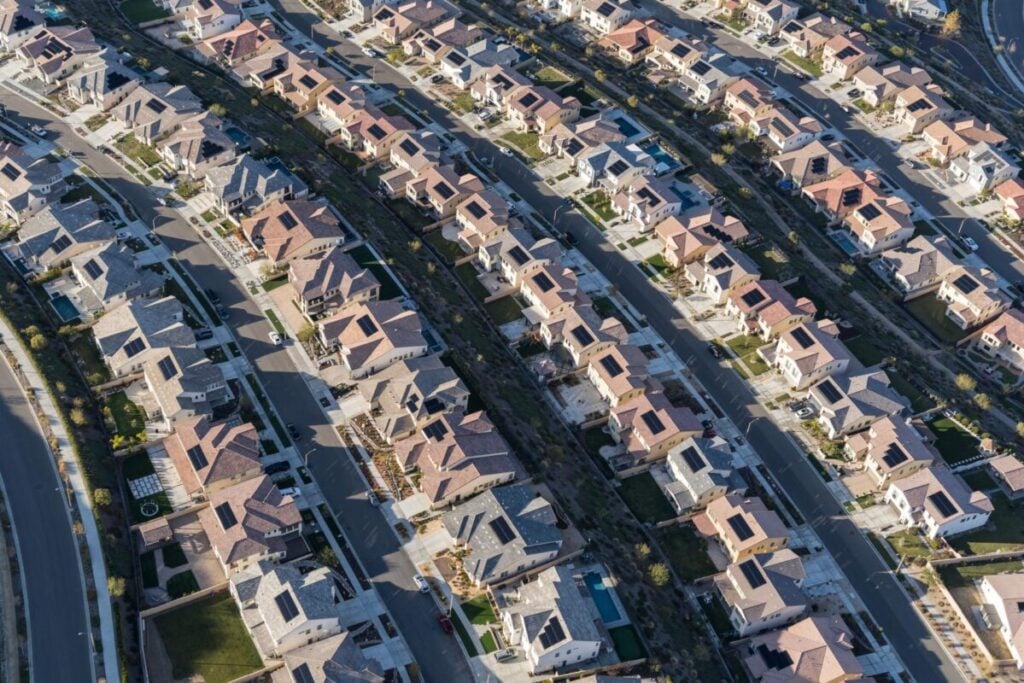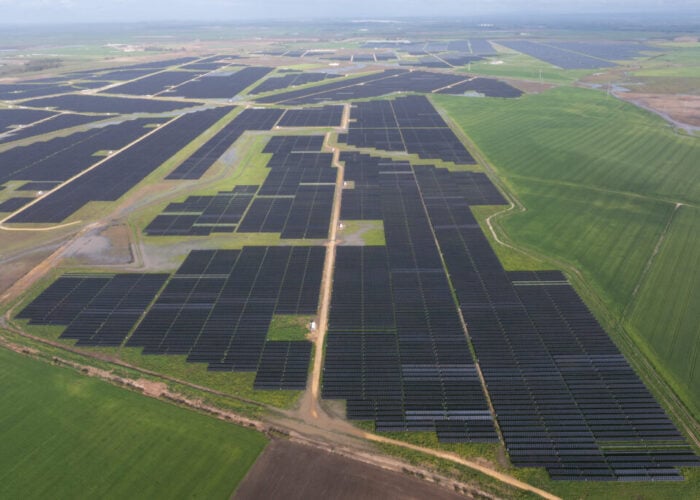
Earlier this month, the California Solar and Storage Association (CALSSA) called for a US$10 million fine to be levied on two west coast utilities for delivering services “far below established standards” pertaining to residential solar and storage installation applications.
Specifically, CALSSA argued that Pacific Gas & Electric (PG&E) and Southern California Edison (SCE) had not reviewed system applications quickly enough, particularly for those larger than 30kW and not covered by the net energy metering (NEM 3.0) rules. While 98% of SCE’s initial reviews, and 96% of PG&E’s design upgrades, were concluded promptly, the remainder of the utilities’ approval processes did not meet a target set by the California Public Utilities Commission (CPUC) to complete 95% of all parts of the review process promptly.
Try Premium for just $1
- Full premium access for the first month at only $1
- Converts to an annual rate after 30 days unless cancelled
- Cancel anytime during the trial period
Premium Benefits
- Expert industry analysis and interviews
- Digital access to PV Tech Power journal
- Exclusive event discounts
Or get the full Premium subscription right away
Or continue reading this article for free
These timelines, combined with the actual process of reviewing, are collectively known as Rule 21, according to Kevin Luo, policy and market development manager for CALSSA, who spoke with PV Tech Premium exclusively on the association’s complaint. He said that the utilities are required to use “reasonable efforts” to meet the timelines imposed by Rule 21, but that this has consistently not been the case.
“The approval process, to me, should be simple and straightforward,” said Luo. “The issue is that utilities are not following that rule, and starting from the year 2020, the commission has required utilities to self-report data on how long it takes them to review each project, and we have about nearly five years of data on utility performance, and there’s a clear pattern of repeated violations of those interconnection timelines.”
When asked about the decision to levy fines in particular, Luo said that responsibility for enforcing these rules and imposing fines for non-compliance should fall on the CPUC, but that this has not happened.
“It’s been a point of frustration for customers in the industry that it’s fallen to us to really move the ball forward on enforcement,” Luo explained. “What we lay out in the complaint is that state law actually requires the commission to penalise the utilities for this … they have not chosen to do so and it’s really an unfortunate reality. It’s our hope that by filing the formal complaint and moving the ball forward we can force the issue.”
As a result, CALSSA has found itself in an unusual position for a trade association, a feeling of obligation to enforce rules upon the utilities with which it works. However, Luo said that he thinks CALSSA has a “strong case”, and pointed to fines levied on utilities for violating power shut-off rules as examples of fines being used elsewhere to force utilities to comply with regulations.
Is it foul play?
For its part, SCE emphasised that its focus remains on delivering “timely and efficient interconnection”. In a statement provided to PV Tech Premium this week, SCE spokesperson Jeff Monford said that: “We are focused on providing timely and efficient interconnection, which is critical to supporting California’s clean energy goals and maintaining trust with our customers.
“We take the complaint seriously, and are working with the CPUC to thoroughly address any issues related to our interconnection processes.”
PG&E, meanwhile, has not replied to requests for comment as of the publication of this article.
When asked about the utilities’ intentions, Luo doubled down on a comment made earlier this month when CALSSA first announced the fines that the utilities’ work amounts to “suppressing what they consider to be their competition”.
“What I said before is still true in the sense that ultimately the consequence of the utilities’ violations of these interconnection timelines is the suppression of customer-side solar and storage,” he told PV Tech Premium.
“That is the ultimate consequence because what’s happening is that you’re adding extra time and extra costs to normal folks trying to install solar and storage on their roofs, on business, on schools and on farms. All these folks have other stuff going on – nobody wants to sit around and wait for an extra six months, one year or two years! – because utilities are dragging their feet on following the rules.”
The inaction of these utilities comes as California’s energy mix is undergoing a rapid period of change following the passage of the NEM 3.0 rules. The rules slashed prices for selling electricity generated at residential solar systems to the grid, in a bid to incentivise more installations of battery energy storage systems (BESS); this saw a significant uptick in the co-location of solar and storage projects in the Californian residential sector within a year of its passage.
Indeed, figures from the American Clean Power Association (ACP) and Wood Mackenzie show that the US residential storage market added a record 458MW in the first quarter of this year, with California and Puerto Rico driving 74% of this growth.
How a decentralised energy system can threaten utilities
However, Luo noted that this rapidly changing energy mix means that utilities have started to see residential storage applications, and by extension, the solar systems to which they are often attached, as competition.
“Historically, it’s hard to deny that the investor-owned utilities in California have viewed customer-sided solar and storage as competition,” said Luo. “Even though California has ambitious climate goals and utilities are technically required to procure a certain amount of clean energy, the evidence shows that the utilities try as hard as possible to avoid including customer-side solar and storage in that renewable energy mix that the state needs in the future.”

“It’s been clear that the utilities have preferred to pursue utility-scale solar projects, mainly because those utility-scale projects require much more grid expansion – you build all these utility-scale solar and wind farms out in the desert then you need to build all the transmission lines to bring the energy to customers – and for the utilities that’s really the honey pot.”
This phenomenon is not unique to California. Earlier this year, Sean Garren of advocacy group Vote Solar spoke to PV Tech Premium about the passage of the latest Integrated Resource Plan (IRP) in Georgia, which featured a number of new fossil fuel projects at a time where the energy transition ought to be accelerating.
Garren noted that the shift from fossil fuels to renewables is also, often, a shift away from large, centralised grids to a series of smaller, decentralised power systems, which is more difficult for a single utility to control and, crucially, turn a profit on.
Working with grid operators
However, this is not to say that the relationship between utilities and residential prosumers needs to be antagonistic; indeed, Luo noted that a trend towards greater electrification is often of benefit to all parties.
“Electrification is actually, very clearly, a good thing for the utilities’ profit margins as more people needing more electricity is good for the utilities,” Luo explained. “If load on the grid is expected to increase as much as it should for the electrification that’s required to hit California’s clean energy goals, there should be more than enough profits to go around.”
“So, in theory, the utilities shouldn’t be as ardent as they are about, I guess, their dislike for customer-side solar and storage, but it seems that the profits they should get from electrification isn’t enough, they want more. That’s my own interpretation of this.”
Luo also noted that there are different priorities and relationships within the utilities, which has helped drive a wedge between utilities and others in the California energy system. He drew a distinction between “the staff from the utilities that are on the ground”, with whom CALSSA has “a lot of respect”, and decision-makers at the utilities who are “deciding how many resources their on-the-ground staff have”.
“There’s that second relationship with the higher-level folks who are deciding how many resources those staff have, and a lot of the issues are that the staff are often extremely overworked – we’ve heard about a lot of staff turnover – and [experience] very poor training,” Luo explained. “It’s unclear to me if the interaction in the complaint will be very collaborative, unfortunately.
“The fact that we’ve had to file the formal complaint itself goes to show that having conversations outside of a formal venue has not made progress.”






